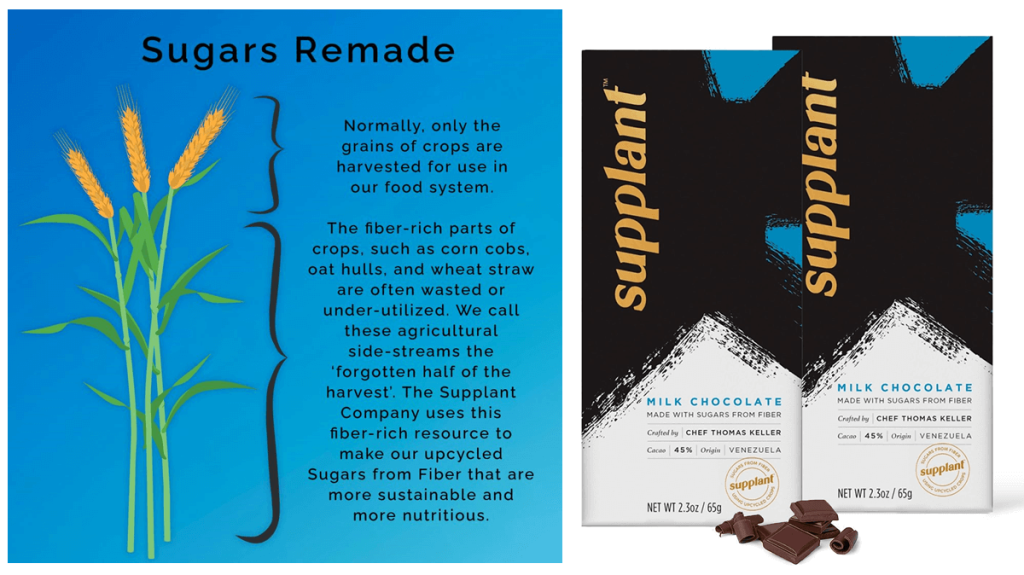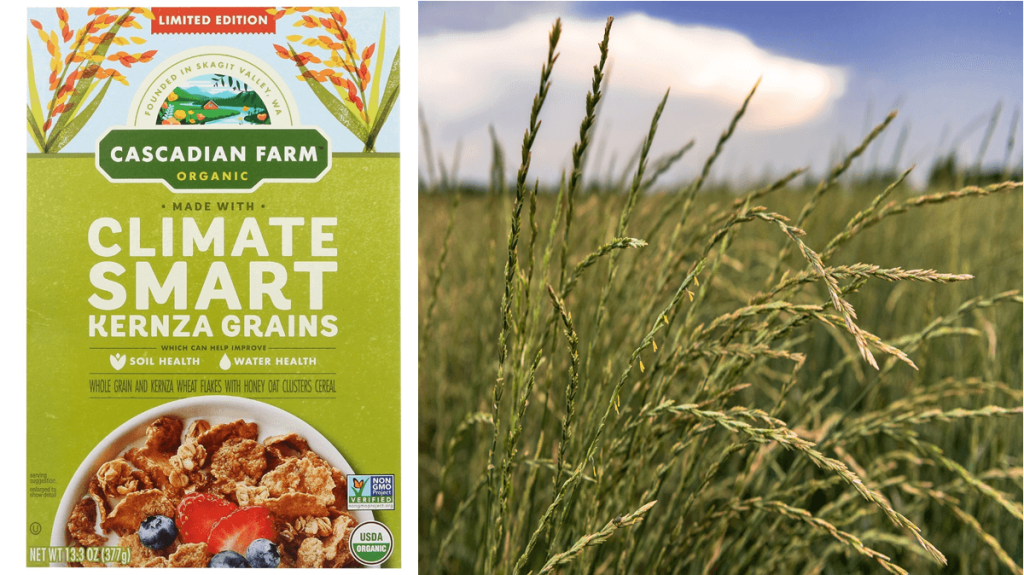Beyond Good is a chocolate company that aims to benefit cacao farmers in Madagascar and Uganda through direct trade purchasing. Most of their finished chocolate bars are now manufactured in Madagascar, employing local people and paying a decent wage. The company, formerly known as Madécasse, was established in 2006 by two Peace Corps volunteers who served in Madagascar.
We make chocolate at origin in Madagascar, working directly with cocoa farmers to buy premium cocoa and employing local Malagasy people at our chocolate factory. Our supply chain is unique, 100% traceable and fully transparent. We’re currently expanding our mission into Uganda. – Beyond Good.
I picked up a bar of the Beyond Good chocolate – the Uganda 73% bar with Crispy Rice – at the Grocery Outlet for $1.49 (it’s normally $3-4). I recently posted on the Top 10 Ethical Chocolate Brands on the Green Stars Project site so I’m trying to learn about brands that I was previously not very aware of. It turns out that Beyond Good was a good place to start!
Review of Beyond Good’s Uganda bar with Crispy Rice
The back of the package contains some tips on appreciating chocolate (slow down, let it melt in your mouth, search your back teeth for flavor..!). I actually love this chocolate and rate it highly – it has a great chocolatey taste, creamy texture, and a nice balance between sweet and bitter (73% cacao). Beyond Good chocolate is made from flavorful Criollo cocoa beans, which are much less common, accounting for around 3% of global cocoa production. I would totally buy this Beyond Good chocolate again and look forward to trying more of their bars.
The crispy rice also works really well in the chocolate, providing an experience that would nicely replace conventional bars like Kit Kats. An upgrade rather than a replacement – the quality of the Beyond Good chocolate is, not surprisingly, much better than a Kit Kat, requiring less to satisfy cravings. One of the many problems with mainstream chocolate bars is that they are designed to be scarfed and then craved again soon after. We tend eat a lot of them and this comes with the cost of a high carbon footprint and widespread deforestation in West Africa.
It seems fitting that these Beyond Good bars contain rice as some of the land used to grow the cacao was formerly used to grow rice – now it’s a forest again!
Instead of chopping down forests to pave the way for additional plot land, the farmers have been converting rice lands into new shaded areas where cocoa pods sprout alongside banana, jackfruit and citrus trees. – TriplePundit
Beyond Good – Direct Trade cacao and manufacturing in Africa
I’m currently writing a chapter on population growth for my book on ethical consumerism. It’s really important to know that many of our global problems have a root in population growth. The more people on the planet, the more resources are needed to sustain them. Population growth is directly linked to the standard of living – the human population in the Global South (developing countries) is still growing while it has now stabilized in most developed countries. Around 10% of all women in sub-Sarahan Africa give birth between the ages of 15 and 19.
Improving the standard of living in the Global South is the best way to curb population growth. Obviously we shouldn’t even need this justification! An adequate standard of living, access to education and family planning resources are basic human rights. But it’s not at all easy for a farmer living on the poverty line to be able to send their kids to school – many kids will work on the farm instead, helping to make ends meet. The supply chain for cacao destined for commodity markets, to be eventually purchased by Nestle, Hershey, and the other big chocolate manufacturers looks like this:

In West Africa, where most of the commodity cacao is sourced by the major chocolate makers, farmers make between 50 and 70 cents a day. The cocoa farmers that Beyond Good works with earn $3.84 per day, on average. They earn over five times more because the supply chain contains no middlemen – it looks like this:

We don’t work with middlemen that chip away at farmer profit. Making chocolate at source is a win, win, win situation. Farmers earn more, customers get a high-quality product (since we’re able to test the cocoa before purchasing it) and we’re able to keep our prices lower than other makers of premium chocolate since we don’t have to pay for the multiple levels of middlemen, exporters, and importers. – Beyond Good.
Africa is the leading producer of agricultural raw materials like cocoa, coffee, and vanilla but these items are exported and processed in Europe or North America. By producing at source in Madagascar we’re able to add value to the local economy, create skilled jobs and produce a finished product that creates more economic activity. – Beyond Good

Beyond Good’s CEO, Tim McCollum, says that the consequences of their farmers earning five to six times more than cocoa farmers in West Africa have been remarkable. Not only are they more likely to be able to send their children to school, but farmers also began practicing regenerative farming because they had the money to invest in it. It’s pretty hard to think about the environment when you’re on the poverty line, but once they escape poverty and are able to look after their families, the farmers often turn to thinking about nature.
You need to deal with poverty before people can care about the environment. Once our farmers were financially secure, they started to think longer-term – Treehugger
Beyond Good – cacao and deforestation
Here are a few quotes from a Yale 360 investigation into the role that the chocolate industry has played in the deforestation of West Africa:
In the past half-century, few countries have lost rainforests as fast as the Ivory Coast. More than 80 percent of its forests are gone.
Around 40 percent of the country’s cocoa crop — more than a tenth of the world’s chocolate bars — is grown illegally in the country’s national parks and 230 supposedly protected government-owned forests.
Most cocoa is grown in monocultures of what is known as the full-sun system, requiring the removal of all surrounding trees.
Very few international companies directly source from protected areas,” says Richard Scobey, president of the World Cocoa Foundation. But they buy from middlemen who do.
Beyond Good’s cacao suppliers are shown on an interactive map, each with a photo and brief bio, including the size of their farm (often just a few acres) and even an estimate of the number of trees. Most of them have had a relationship with Beyond Good for over five years.
The information on the number of trees per farm is really useful because there are separate counts for “cacao trees” and “total trees.” The largest producer (Théodule) has the following stats: Total Trees: 94404 and Cocoa Trees 73958. So there are around 20,000 non-cocoa trees on this farmer’s land, or around 20% of the total number of trees.
A typical parcel of cocoa forest in our supply chain will have 75% cocoa trees and 25% shade trees – Beyond Good, on Treehugger
According to a 2018 paper in Nature Sustainability, around 30% shade cover seems to represent an ideal compromise between crop yield, climate mitigation, climate adaptability, and biodiversity.
Our results suggest that cocoa agroforests up to 30% cover are far superior to monocultures because they do not strongly compromise production, while at the same time they provide benefits for disease management, climate mitigation and adaptation and biodiversity conservation – Climate-smart sustainable agriculture in low-to-intermediate shade agroforests
So, Beyond Good’s suppliers are close to that ideal level of shade cover, providing much more support for biodiversity and climate change mitigation than sun grown cacao.
Beyond Good chocolate – Ingredients and Nutrition
Beyond Good Crispy Rice, 73% Cocoa
Ingredients: Organic cocoa beans, organic cane sugar, organic crispy rice, organic cocoa butter, organic vanilla extract.
Nutrition Facts: Each 25 gram bar provides 10 g fat, 6 g sugar, 3 g fiber, and 2 g protein. Zero sodium.
The bar is vegan, organic, Kosher, and gluten-free.

Ethical rating for Beyond Good chocolate
I think that Beyond Good chocolate deserve 5/5 Green Stars for social and environmental impact, based on these factors:
- Beyond Good chocolate is a vegan product.
- All of the ingredients (in my Uganda bar) are certified organic.
- All bars are free of palm oil.
- Beyond Good has a direct trade relationship with cacao farmers, who earn at least 5 times the average income for West African cacao farmers. This has a huge impact, on the quality of life, especially since Madagascans are generally poorer than West Africans.
- Beyond Good’s chocolate is predominantly made in Madagascar and will soon also be made in Uganda. Most other chocolate makers just source the ingredients from commodity markets and then process it elsewhere.
- Farmers report on both cacao and non-cacao trees on their property and it appears that the farms average at around 20-25% shade cover. These other trees enhance biodiversity and help mitigate climate change.

Summary scores (out of 5) for Beyond Good chocolate:
- 4.5 gold stars for quality and value
- 5 green stars for social and environmental impact
If you have a different opinion, please share your rating!





Leave a comment